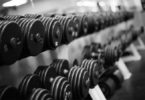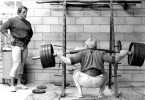In jiu-jitsu, as in life, progress is not linear. You have good days and bad days: days where everything clicks and you run through dudes you have no right to be even co-existing with, and days where nothing goes right and you come away wondering if you’re actually learning anything, at all. Recently, a buddy Tweeted me:
‘What’s your ratio of good jiujitsu sessions vs bad jiujitsu sessions? Mine is running 1:3 at [the] moment.’
And instead of going with the smart-arse immediate answer (‘Define “Good”), I actually thought about it. I think my ratio’s more like 1:3:1 – one session where everything’s great, one where I’m terrible, and about three in five punch-the-clock days where I just go in, bump fists and get it done. An interesting thing: from experience, this seems pretty typical across a lot of spheres. Writing, drawing, going to the gym: maybe 20 percent of sessions suck, 20 percent are great, and the other 60 are just fine. Is this helpful? It depends how happy you are with only being happy 20 percent of the time.
The thing is, to get really good at anything, you have to put a lot of time into it, and a good way to do that is to find ways to have good days every day. So even on the days where you come away with a bruised jaw, mat burns on your forehead and the painful memory of tapping out to a Hail-Mary baseball bat choke (please find your own metaphor), the session still did something. How do you do that?
You make it about the process.
In jiu-jitsu, this means learning something new every day. Preferably something that fits into the stuff you’re already learning: it’s fine to learn a new move, but better if you can eliminate a mistake you regularly make, or shore up a weak spot where you aren’t really sure what to do. If a dude taps you out six times and then shows you what to do so that he won’t tap you out so easily again, that wasn’t a bad session: that was a great session. If what you get is less than that, a small thing that you won’t always be able to use but that advances your knowledge 1%, that’s still a good day. Sometimes, I still forget this and make it all about the rolling. These are the bad days.
In the gym, things are similar: some days you feel strong and crush everything, some everything goes wrong and you can’t get your 3RM up for a shitty single. These are the days when you really get it done: you focus on your technique, pull your scaps back and down, get your heel placement right and lock everything in for the next time you’re feeling strong, when you’ll feel the benefit of those reps.
In drawing: well, I’m terrible at drawing. But I have days where I pull out something good, and ones where what I do is so embarrassing I want to screw it up and throw it away (I mostly don’t, because looking at my old failures is a) Instructive and b) Heartening, a few weeks down the line). But the good sessions are the ones where I find something to fix: I realise that I can’t foreshorten a head from underneath or draw a fucking eye properly, and I dig into the nitty-gritty of sorting that out.
In life, there are good and bad days. But if you’re learning on all of them, then none of them are that bad.
HOMEWORK: Pick a skill that you’ve been meaning to fix: the one that’s the hardest, and the one that’s holding you back. If you don’t know what that is, ask somebody better than you. Go fix it.






Leave a Comment